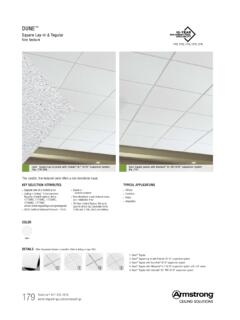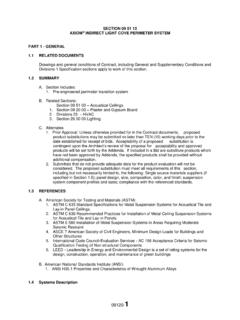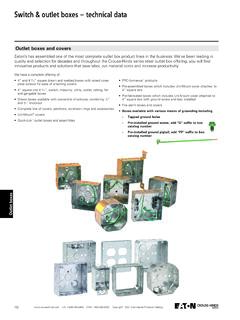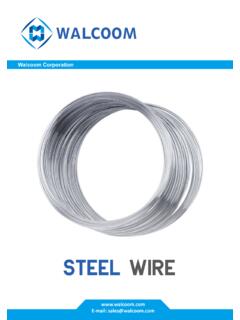Transcription of STANDARD SUSPENDED CEILINGS
1 Adjusted for the 10 unit gridSTANDARD SUSPENDED CEILINGSA ssembly and Installation Instructions1. This installation document is intended as a general application overview, covering essential steps of a SUSPENDED ceiling installation. This document represents STANDARD methods as supported by the manufacturer and are in addition to following the standards outlined in ASTM C636. These standards represent the manufacturers recommendations; however, all installations are subject to requirements set forth by the authority having These instructions should be supplemented with Armstrong s "The 20 Minute ceiling Installer" video for examples of the installation steps, as well as the product specific installation instructions of the product being TOOLS REQUIRED2.
2 1 Here is a list of the most common tools needed for installing a SUSPENDED ceiling . Required tools and materials may vary based on job-specific conditions. PPE: Cut resistant gloves, safety glasses, hard hat, steel-toe boots Ladder(s), rolling scaffold Lasers: horizontal line leveling, vertical alignment, point String line: control/dry line Chalk line Tape measure Carpenter pencil Cordless drill with screw tips and drill bits Snips: metal cutting tin snips Rout hole punch Pop riveter, aluminum white pop rivets Lineman pliers with wire cutter Hammer 2 Screwdrivers: slotted, Phillips Spring clamps: 5 to 7 (small) Utility knife Tool belt Hole saw Fasteners.
3 Wall molding attachment3. INSTALLATION Grid There are many different grid layouts used for different products, panel sizes, or fixture integration. Below are guidelines for some of the more typical STANDARD 2' x 4' (Fig 1) Main beams spaced 48" 4' cross tees shall intersect the main beams at 90 every 24" STANDARD 2' x 2' (Fig 2) Main beams spaced 48" 4' cross tees shall intersect the main beams at 90 every 24" 2' cross tees shall be installed at the midpoints of the 4' cross tees, creating 24" x 24" modules. H-Layout / Cross-Hatch (Fig 3) Cross-hatched layouts differ from STANDARD layouts by increasing the spacing of the cross tees that span the mains (typically 24" ) to a distance equal to or greater than the hanger spacing along the mains (typically 48" ).
4 When using cross-hatched layouts, cross tees should be equivalent to mains in load carrying capacity (Lbs/LF) since they are now carrying the same load as the mains based on spacing. Refer to grid product data pages for load test data of grid components.(Fig 1)(Fig 2)(Fig 3)Armstrong Grid Main Beam Armstrong Grid 4' Cross Tee 24" 48"Armstrong Grid Main BeamArmstrong Grid 4' Cross TeeArmstrong Grid 2' Cross Tee24" 24" 48"Armstrong GridMain Beam Armstrong Grid4' Cross Tee48"24"48" Plank SizesGrid layouts for plank sizes can be constructed in three different ways.
5 The end solution may be chosen based on the desired panel orientation in relation to the mains and load on the grid components: 1. Main spacing equal to panel length (panel length perpendicular to mains), cross tees spanning the mains at spacing equal to panel width (Fig 4). Refer to the grid product data pages for load test data specific to the length of cross tee being used. Supplemental wires may be required based on the span of the grid and weight of the ceiling product being installed. 2. Main spacing equal to panel width (mains parallel to panel length), cross tees spanning the mains at spacing equal to panel length (Fig 5).
6 3. Cross-hatching of the grid components, allowing panel length to run parallel with mains without main spacing being equal to panel width (Fig 6). When cross-hatching, consider the increased load on the cross tees, especially the cross tees spanning the mains. Refer to the grid product data pages for load test data specific to the length of cross tee being used. Supplemental wires may be required based on the span of the grid and weight of the ceiling product being Running Bond / StaggeredRunning bond or staggered layouts differ from STANDARD layouts by alternating the grid openings between different rows of mains.
7 This results in single cross tees occupying rout holes. These single cross tee connections must be reinforced to meet code requirements for connection strength. Armstrong s recommended solution is the Single Tee Adapter Clip (STAC) (Fig 7). Room LayoutProper layout within a space is crucial for a good installation. Some layouts may have a starting point established by the architect noted on the prints. Examples of starting points may be for a specific border dimension, full size borders, or referenced from lights or columns. It is important to check the project plans before Calculating Equal BordersThe most pleasing visual is achieved when the border panels are no less than 10" wide, and the opposite wall has the exact same size border panel achieving proper room balance.
8 For installations that require equal borders, the following steps will help you layout an installation with equal borders on opposite sides of the space.(Fig 4)(Fig 7)Armstrong GridMain Beam Armstrong Grid6' Cross Tee 24"72"(Fig 5)96"24"Armstrong GridMain BeamArmstrong GridCross Tee(Fig 6)72"24"48"Armstrong GridMain BeamArmstrong Grid4' Cross Tee Armstrong Grid6' Cross Tee Armstrong Grid2' Cross TeeArmstrong GridMain BeamDETAIL ASingle TeeAdapter Clip (STAC)Pop Rivet24"48"DETAIL ASCALE 1 : 24 Determine the direction of the main beams and panel length.
9 Divide each dimension of the space (length and width) by the panel length in that direction. Ex: 28' 9" (room width) / 2' (panel width) = 14 full size panels and a 9" remainder Divide the remainder to get even opposite border panels. If this results in border panels less than 10" you will need to add a full panel to the remainder so that the border panels are greater than 10". Ex: 9" (remainder) / 2 (borders) = 4-1/2" border (too small) 24" (full panel width) + 9" = 33" (new remainder) 33" / 2 (borders) = 16-1/2" borders with 13 full size PlenumAllow at least 3" below the old ceiling , duct work, pipes, or wiring as clearance to maneuver a ceiling panel into the opening of the WALL Wall molding is not considered a load bearing component of most SUSPENDED ceiling systems, but it must be securely attached to the wall every 16" - 24" Mitered Inside CornersWhen you get to your inside corners, a finished 45 miter is a much more pleasing visual than simply overlaying butt cuts.
10 All you have to do is mark and cut 45 on the lower angle then overlay the butt cut upper angle for a perfect mitered visual from below (Fig 8). Outside CornersThe outside corners require a little more attention, but are still easy to achieve a clean mitered visual. Simply let the angle override past the corner, then square butt cut to length. Next, cut away the vertical flange, leaving an exposed horizontal tab. Do this to both angles that approach the outside corner. After overlaying them at the corner, mark where the 45 miter cut will occur on the lower angle.














